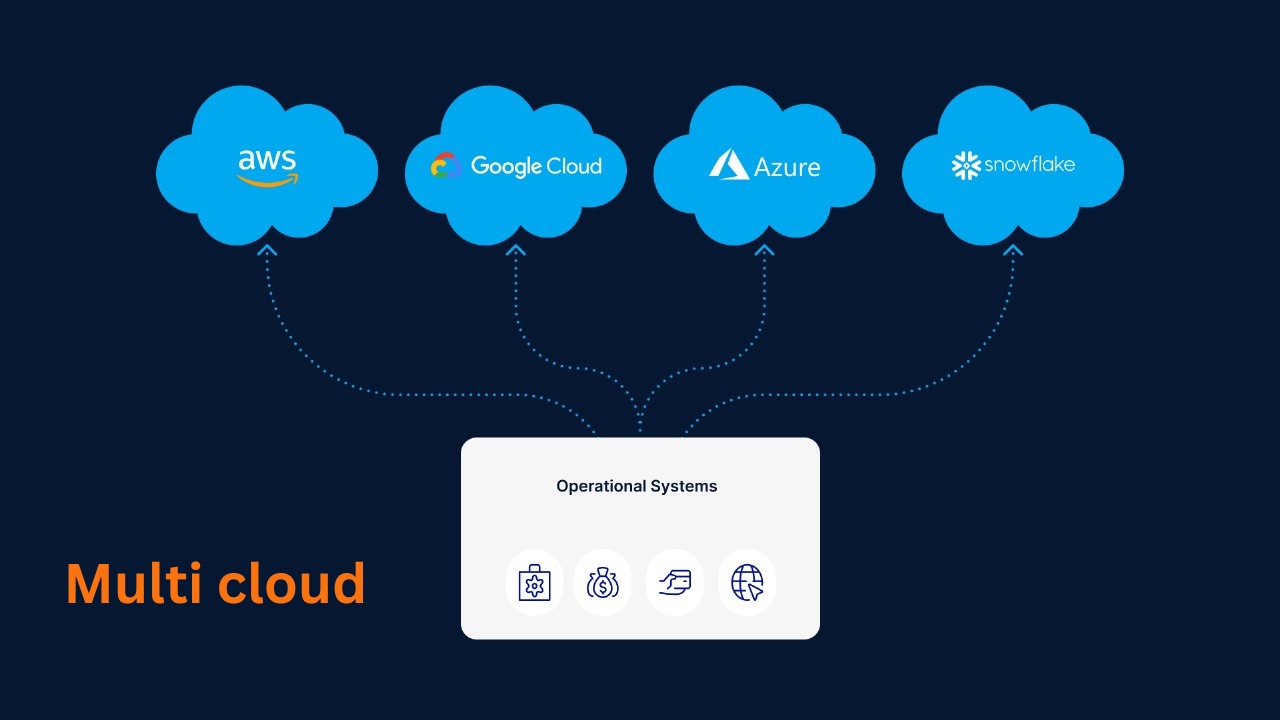Building a Strategy for Multi Cloud Environment
What is a Multi cloud?
Multi cloud strategy is the usage of two or more cloud services such as AWS(Amazon Web Services), Azure, Google Cloud and other providers so that you can use Google cloud to serve your US users and Microsoft Azure for your customers in Europe.
Or you might use Azure SQL for your databases and Cognito for user management while using AWS EC2 instances and Load Balancing, all for a single application.

Why Multi cloud is the need of the hour?
- With the availability of multiple vendors in cloud business we can use the best of the cloud service for a particular use case at the same time achieve a significant cost reduction.
- The approach also avoids Vendor locking-businesses can explore different providers to find the best match for each part of business operations
Data Management
Data Management- Rather than dumping all your data into one cloud, you can diversify to take advantage of the right service for the right function.
Disaster Recovery
- Disaster Recovery-When you use multi-cloud architecture, it makes your company’s services resilient against cyber attacks because there are other clouds available to take the workloads when one cloud goes down.
- Cloud-based application is not resilient which can affect disaster recovery during loss of a single data center.
Low Latency
- Low Latency-When users are not located near any data center, or widely distributed geographically.
- Using a multi-cloud environment, cloud architects can deploy data centers to multiple regions according to user locations.
- The data center closest to end-users can serve the requested data with minimum server hops.
- This capability is especially useful for global organizations that need to serve data across geographically disparate locations while maintaining a unified end-user experience.
- Facing regulations limit in particular countries for storing data, e.g. EU.
Key Things to Keep in Mind for Multi Cloud migration strategy
- Analyze your entire network, and then identify which service of particular cloud provider is the best for your specific requirement.
- Identify the apps your organization that are best suited for multi-cloud environment.
- Unlike traditional apps, cloud-native apps are flexible and service-oriented.
- comprised of collections of containers and services, based on a scale-out architecture.
- Also, these are easy to automate, move, and scale.
- Having multiple cloud providers increases low-level maintenance and monitoring tasks.
- So have a plan to create automation scripts/jobs for such low level monitoring tasks.
- Focus on policy standardization that are applied automatically to each cloud environment.
- Use integrated data center management system designed for virtual environments.
- Prominent Multi-Cloud architectures and migration strategies. An application after migration to cloud can use storage of AWS and compute on Azure VM.
- This improves availability of the application and avoid vendor locking.
- On similar terms an application after migration to cloud can use storage of AWS and compute on Azure or AWS VM.
- Application is re-architect ed as fine-grained components so that deployment of high-usage components can be optimized independently. The parallel design enables better throughput to multi-cloud platforms.
- One application unit is deployed on AWS and the other application unit is deployed on Azure.
- This approach improves scalability/performance, agility to respond to business/IT change.
- Two independent application units interacting with each other [Application1] is on premise while we deploy two re-architect ed [Application2] one on AWS and one on Azure we can connect [Application1] and [Application2] via a Service Bus or Cloud broker services.
- which integrates all three components and provides flexibility to choose services from multiple providers.
- Using this approach the systems responsiveness returned to maximum.
- Having said all these things the users should not be confused between a Multi Cloud and a Hybrid Cloud Environment.
Hybrid cloud
- The organization replicates data across to the public cloud, but all other resources remain non-operational until needed.
- Hybrid cloud is a mix of public and private cloud that connects the public cloud such as AWS to your on-premise system and is orchestrated to perform together for a single task.
- Using Hybrid cloud, organizations can access highly elastic compute resources from the chosen provider, perhaps for managing and storing additional workloads at peak times and for general day to applications.
- But all the mission-critical stuff remains on-premise infrastructure for multiple reasons like privacy regulations and security. Moreover, cloud customers can use hybrid clouds to promote high availability (HA) and disaster recovery (DR).
- For example, in a Disaster recovery scenario, an organization can keep its recovery environment in a public cloud and production environment in a private cloud, ready to spin up as necessary.
- The organization replicates data across to the public cloud, but all other resources remain non-operational until needed.
Multi-cloud
- Multi-cloud as discussed above represents more than one cloud deployment of the same type and it can be public or private cloud, sourced from different cloud providers.
- Both Multi and Hybrid cloud approaches are not mutually exclusive.
- You can have both, simultaneously based on the business needs for the best use in your organisation.


